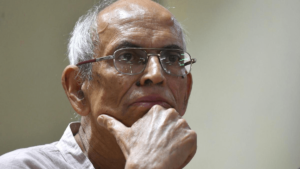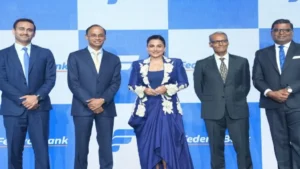Subhas Chandra Bose, also known as Netaji, was an Indian revolutionary who was active in the independence movement against British rule of India. Subhas Chandra Bose was the son of a wealthy and well-known Bengali barrister, attended Scottish Churches College and Presidency College in Calcutta (Kolkata), where he was expelled in 1916 for his nationalist activities (graduating in 1919). Then, in order to prepare for the Indian Civil Service, his parents sent him to the University of Cambridge in England. Subhas Chandra Bose passed the civil service exam in 1920, but in April 1921, after learning of the unrest caused by nationalists in India, he abruptly withdrew his name from consideration and sped back to his native country. A rich Calcutta lawyer and Indian National Congress (commonly known as the Congress Party) politician named Sarat Chandra Bose (1889–1951) provided him with both material and emotional assistance over the course of his career, especially in the beginning.
Subhas Chandra Bose-Birth
Subhas Chandra Bose was born on January 23, 1897, in Cuttack, Orissa (now Odisha), India to Prabhavati Bose (née Dutt) and Janakinath Bose. The centre of family life, Prabhavati, also known as M. Janan (literally, “mother”), gave birth to her first child at the age of 14 and raised a total of 13 children. The sixth son, Subhas Chandra Bose, was the ninth child. Subhas Chandra Bose father Jankinath was a successful barrister, who represented the government, was devoted to the British Indian administration and meticulous in his observance of the letter and spirit of the law.
Subhas Chandra Bose- Education
- In total, Janakinath Bose and Prabhavati Dutt had 14 children, with Subhas Chandra Bose being the ninth. Protestant European School in Cuttack served as Netaji Subhash Chandra Bose’s primary educational institution.
- Subhas Chandra Bose was a diligent student, and his effort allowed him to finish in second place on the matriculation exam. He afterwards attended Presidency College, a college that is now a university, in Calcutta.
- Subhas Chandra Bose paid close attention to the writings of Swami Vivekananda and Sri Ramakrishna Paramhansa Dev at the time, and was strongly influenced by their teachings and ideas. A powerful spirit of rebellion was ignited in Netaji Subhash Chandra Bose when he was expelled from the university as a result of some baseless accusations, and the widespread British persecution of Indians he witnessed in Calcutta only fanned the fires.
- Subhas Chandra Bose next enrolled in Scottish Church College, a division of the University of Calcutta, where he graduated with a degree in philosophy in 1918. He subsequently took a trip to London with his brother Satish to study for the Indian Civil Services examination, and because to his vast knowledge, he was able to pass the test the first time.
- However, Subhas Chandra Bose was not too pleased about the idea that he would now have to work for the British government. The horrific Jallianwala Bagh slaughter, however, made him confident that he would no longer work for the English, and in 1921, he eventually left the Indian Civil Services to protest against the British administration.
Subhas Chandra Bose- Death Anniversary
Subhas Chandra Bose passed away on August 18, 1945, in Taipei, Taiwan, from third-degree burns sustained when his overloaded Japanese plane crashed in Japanese-controlled Formosa (now Taiwan). During World War II, he also served as the commander of an overseas Indian national force fighting the Western forces. However, many of his admirers, particularly in Bengal, refused to accept either the truth of his passing or the circumstances surrounding it at the time, and many continue to do so to this day. Several martial myths about Subhas Chandra Bose have persisted due to conspiracy theories, which surfaced shortly after his passing and have endured for decades.
Subhas Chandra Bose Jayanti
Subhas Chandra Bose was born on January 23, 1897, in Cuttack, Orissa (now Odisha), India. Netaji Jayanti or Netaji Subhas Chandra Bose Jayanti, also known as Parakram Diwas or Parakram Divas (literally, “Day of Valor”), is held to commemorate the birthdate of the illustrious Indian liberation warrior Netaji Subhas Chandra Bose every year on January 23.
Subhas Chandra Bose- Achievements
Formation of the Azad Hind Fauj (Indian National Army – INA):
- Bose reorganized and led the INA during World War II with the aim of overthrowing British rule in India.
- The INA included Indian prisoners of war and expatriates, marking a milestone in India’s freedom movement.
Provisional Government of Free India (Arzi Hukumat-e-Azad Hind):
- Bose established the provisional government in Singapore in 1943, which was recognized by several Axis powers, including Germany, Japan, and Italy.
- This government symbolized Indian sovereignty and the commitment to independence.
Great Leader (Netaji):
- Subhas Chandra Bose earned the title “Netaji,” meaning “Respected Leader,” for his inspiring leadership and unyielding determination to free India from colonial rule.
Role in the Indian National Congress:
- Elected twice as the President of the Indian National Congress (1938, Haripura; 1939, Tripuri).
- Advocated for radical and immediate actions against British rule, opposing the more moderate approaches of leaders like Mahatma Gandhi.
Advocacy for Modern Industrialization:
- Bose envisioned a self-reliant India and strongly supported the development of industries, scientific research, and technology to strengthen the nation.
Renaming the INA Brigades:
- INA brigades were named after iconic leaders and symbols of India, such as Gandhi Brigade, Nehru Brigade, and Subhas Brigade, reflecting his respect for other freedom fighters.
Subhas Chandra Bose- Contributions
- Role in Uniting Indians: Bose inspired unity among Indians, transcending barriers of religion, caste, and language, to fight for a common cause.
- Women Empowerment: He established the Rani of Jhansi Regiment, an all-female combat force in the INA, empowering women to actively participate in the freedom struggle.
- Advocacy for Complete Independence (Purna Swaraj): Bose was among the first leaders to demand complete independence from British rule, rejecting the idea of dominion status.
- Promotion of National Pride: His famous slogan, “Give me blood, and I will give you freedom,” continues to inspire patriotism among Indians.
- Vision for Free India: Bose envisioned a socialist and egalitarian India, emphasizing equal rights, economic self-sufficiency, and education for all.
- Collaboration with Axis Powers: Bose sought international support for India’s freedom by aligning with Axis powers during World War II, believing it to be a strategic move against the British.
- Influence on Indian Armed Forces: The INA’s efforts and sacrifices motivated members of the British Indian Armed Forces, contributing to the eventual British decision to leave India.
- Cultural and Political Awakening: Bose’s efforts inspired Indians to embrace their cultural heritage and actively participate in the nationalist movement.
Subhas Chandra Bose’s Famous Quotes
- Subhas Chandra Bose most famous quote was “Give me blood and I will give you freedom”.
- Dilli Chalo (“On to Delhi)!” This was the call he used to give the INA armies to motivate them.
- Jai Hind, or, “Glory to India!” was yet another slogan he used that was later adopted by the Indian government and armed forces.
- Subhas Chandra Bose also came up with the phrase “Ittehad, Etemad, Qurbani” (Urdu for “Unity, Agreement, Sacrifice”).
Subhas Chandra Bose’s Wife and Family
- Netaji Subhash Chandra Bose was the son of Janaki Nath Bose and Prabhavati Devi. In total, he had 13 siblings made up of 6 sisters and 7 brothers. He came from a prosperous household at birth.
- Emilie Schenkel was the wife of Netaji Subhash Chandra Bose. Very little was known about this wife since Subhash wanted to keep his personal life private and hardly ever discussed it in public. His daughter’s name was Anita Bose.
- Subhas Chandra Bose was never able to give his family a lot of his time and attention because of his duty to the country. He spent his entire life serving the country because he never put anything else before the country or his purpose to set the country free.



 Which Bird is known as the Harbinger of ...
Which Bird is known as the Harbinger of ...
 Renowned Ecologist Madhav Gadgil Passes ...
Renowned Ecologist Madhav Gadgil Passes ...
 Federal Bank Unveils 'The Fortuna Wave':...
Federal Bank Unveils 'The Fortuna Wave':...







